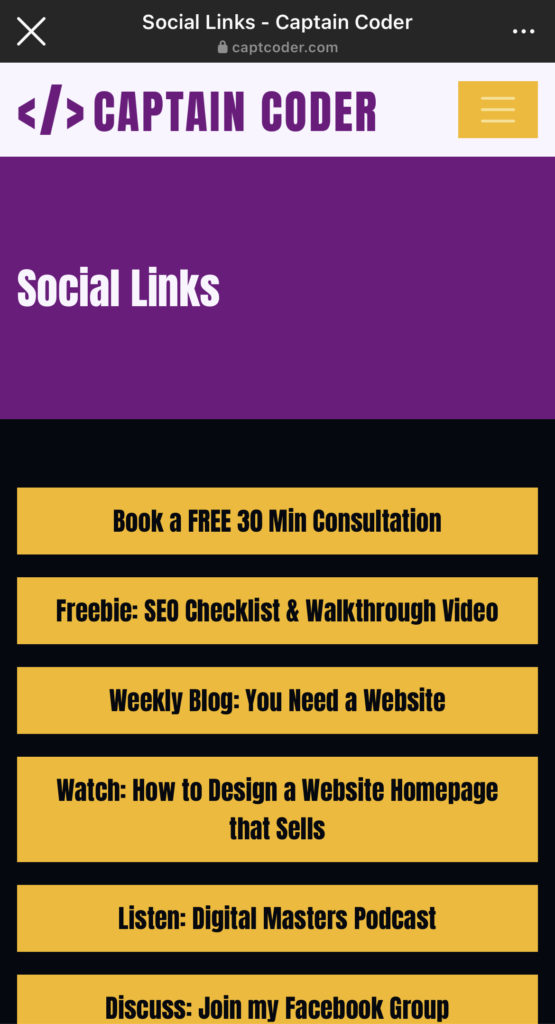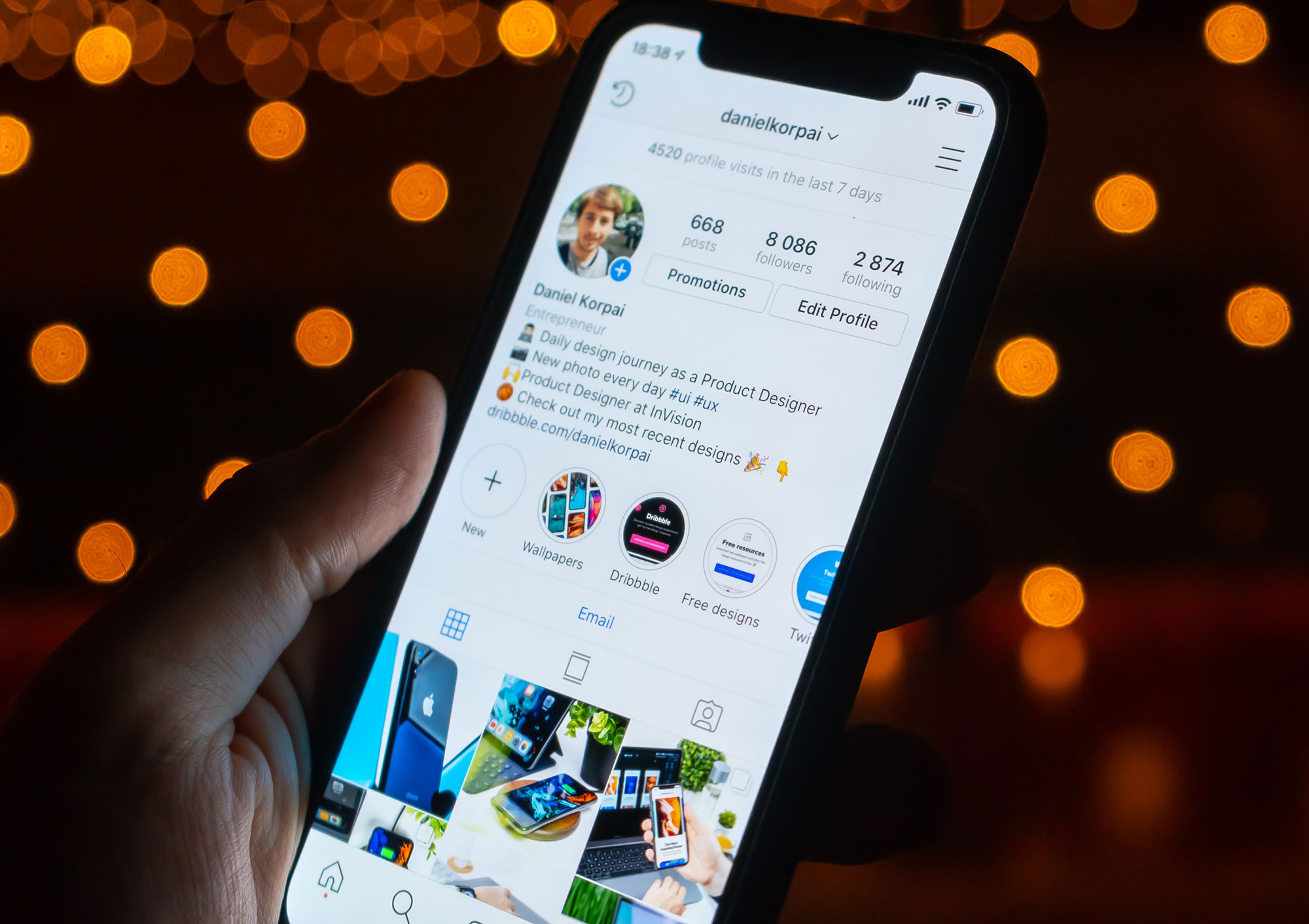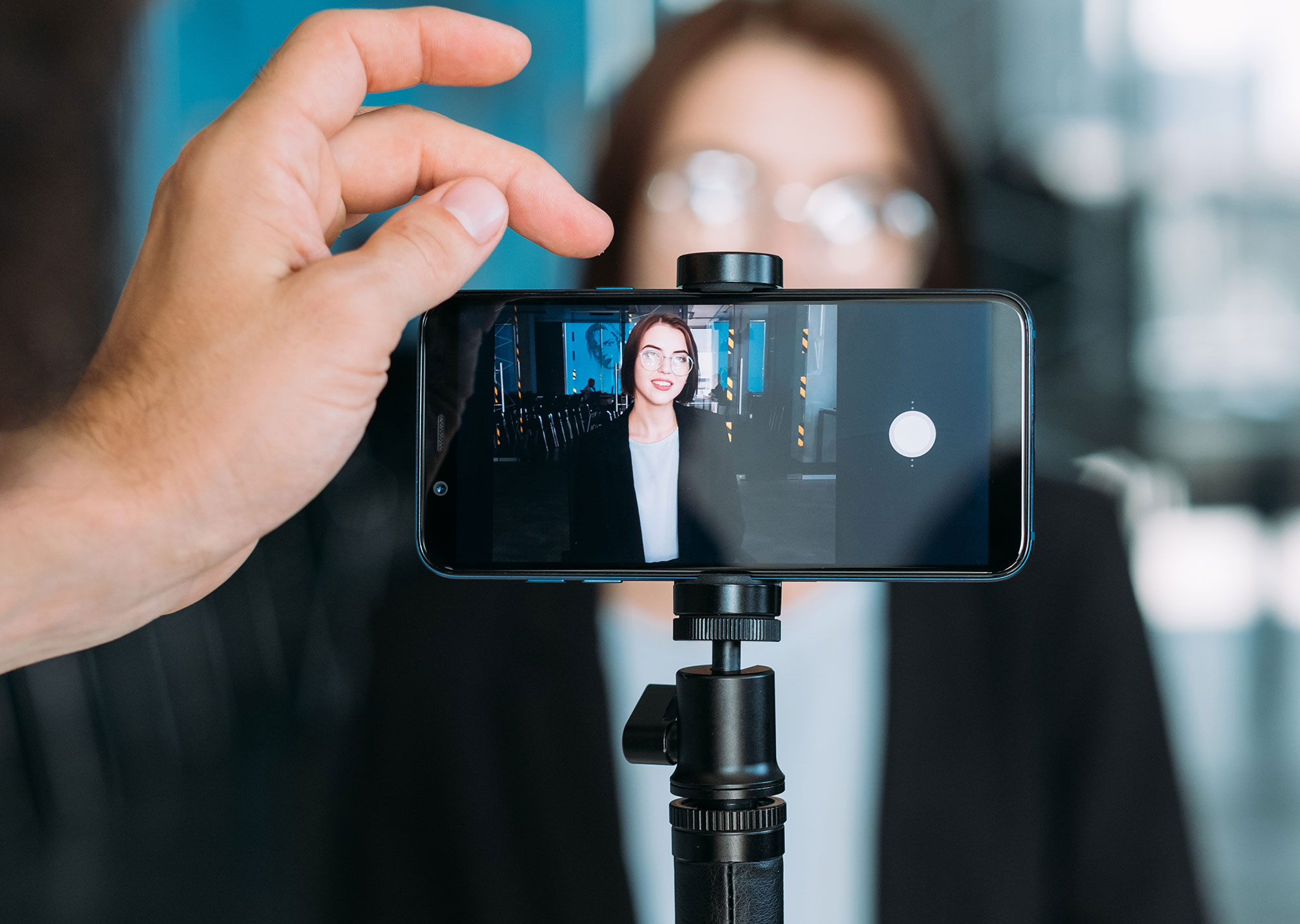Do you market a lot of your business on Instagram?
Instagram is a great platform because the variety of users that are on it. It’s also has great discoverability if you follow some simple best practices.
What Instagram is not great for is sharing external links and your own website. In fact, you get only one link in your bio to promote. Kind of annoying right? How can you share more when you have multiple offers?
A few years ago, services popped up like Linktree and Linkin.Bio that allowed people to create a landing page of links. This was great because you could not use the one link in your bio to direct your followers to 5-10 links. These links could go to your own website, landing pages you’d created, YouTube channels, other social platforms, and more. Really, the options are limitless.
But do you really need yet another service (that you might need to pay for to get the best use out of) when you have your own website?
The short answer? No.
Drive Traffic to Your Website
If you already have a website, you want to actually drive traffic to it. While Linktree is great if you have landing pages in different places (think hosted on Convert Kit or Kajabi or something similar), the goal of social media is to drive traffic to your own website. After all, that’s where you’ll want your target audience to go to learn more about you, your services, and how you help. Sending them to your website allows you to not only build up your visitor numbers, but also gives them the chance to explore your website further.
Make the Experience Seamless
The other component of this? Don’t confuse your users or give them multiple steps. If most of the links on your Linktree page now are already on your website, you’re taking someone from Point A (Instagram) to Point B (Linktree) only so that they can get to Point C (your own website). That can cause confusion and provides a poor user experience.
Instead, taking them right to your website allows them to get what they were looking for and dig in deeper. It also means they see your URL and have that saved in their history vs a random Linktree address.
Keeping Your Branding Seamless
Having your own link page on your own website allows you to also keep everything 100% with your current branding. While you can customize some of the look and feel of a link page service, you’ll be a little limited to their templates. Instead, keeping it on your website keeps that brand experience seamless, too, because it’s really just another page on your website.
Get Better Analytics
Want analytics of who is hitting your link page? You’ll have to pay for that upgrade on Linktree and the other top link services. That’s all well and good, but if you want to do anything with that data, there’s that other subscription you didn’t need. Instead, using a page on your own website allows you to track the analytics for free with the same Google Analytics account you use for the rest of your website. Which means you can also track their behavior flow and see if they go to the pages you think they are and what they do after they’re clicking that first link.
Some Things to Keep In Mind
Before you start switching your Linktree over to a page on your website, I want you to examine all the links you have on it now. Are 50% already going to pages on your website, or to something external (i.e. a page hosted on ConvertKit or a YouTube channel)? If it’s at least 50% going to your own website, feel free to make the switch.
If not, you do run the risk of driving traffic to your website that clicks just to go somewhere else. That can make Google think you have what’s called a high bounce rate (when someone gets to your website only to leave within a minute and not do anything else). That can affect your SEO, so if most of your links are to third party apps, stick with a Linktree.
If many of those are landing pages you’ve built with ConvertKit or another service, I highly recommend you explore bringing those landing pages to your own website anyway. There’s no real benefit to taking valuable website traffic to multiple third-party destinations. Instead, you really want to take people to your own home on the internet and keep them there as long as possible.
Building Your Links Page
A links page on your own website can be simply that – just a page on your website. You can check mine out to get some ideas. You’ll see from the screenshot below that it’s optimized for mobile first and I’m taking people to my top things I want them to do – schedule a call, read my most recent blog, get my freebie, listen to my podcast, etc. You’ll notice that the top 3 things stay on my website, while the next 3 go off-site.

You’ll also notice that I just made these buttons so they’re really easy to navigate on a phone and find what I need. The buttons and page layout match the rest of my website and you have access to my website’s main menu, get my logo, and if you scroll down, all the links in my footer, too.
Your link page doesn’t need to be complex and since it’s largely just for Instagram or possibly TikTok users, you don’t need to worry so much about what it looks like on anything larger than mobile (though do check it out just in case).
My particular page displays my most recently blog automatically as soon as it’s published, which means I don’t have to manually update links on a regular basis. Much easier than using a third-party app!
Your Website is Your Marketing Home
More than anything, your website is your business’s home on the internet. It’s where everything you do should come back to, so taking your target audience away from your website to a third-party platform just causes confusion for you. Make it easier by keeping your users on your website as much as possible!



